Coming to our senses: Becoming planetary gardener
Future Possibles
I emigrated from Canada to Granada, Spain in 2013. I knew and loved Granada and decided to experience what it is like to immigrate as a woman, in her late thirties, with a higher education diploma and professional academic work experience in the South of Spain. The Institute of Regional Development at Granada University welcomed me as a visiting researcher. The then director offered me a list of university colleagues who shared my research interests. A month after my arrival, I met an activist and art history professor who works on rural landscape and their protection. I explained that I had seen several rustic properties (my initial idea was to buy a piece of land and be a permacultor) but that as a Canadian I was missing trees, a small forest. This is when the spell was cast. He answered me that I might like a place called Jesús del Valle. Things regarding the property had been paralysed for some time, but he thought I might be the right person to put things back in movement. Five days later, on December 1, 2013, at the end of the afternoon, when the sun had left the valley but was still lightning the snowy peaks of Sierra Nevada, I saw the Jesuit farm and its surrounding landscape.
It felt like I was in a vortex where flashes of past landowners; Al-Andalus Emirate of Granada, Jesuits, aristocrats, fascists, again aristocrats, corporates were swirling around me. I came back transformed, possessed by the idea that I should concentrate my energies at the service of making the place thriving again, a melting pot of the good practices that had kept this agroforestal landscape producing abondance for more than a thousand years. I was going after Goliath, running.
Past Present
Location: Southern Europe Andalusia Granada province, 2,000 hectares of agricultural land part of the municipality of Granada, named the valley of the Darro river where a privately owned ruined 16-17th century Jesuit Farm (commonly known as Jesús del Valle) with 400 hectares of land, irradiate potentialities. The appraisal of the value of the property is around € 2,1 million for the land and € 120,000 for the farm buildings.
First let’s lay out the constrictive aspects (private property, politics, economics, hegemonic model) inhibiting potentiality emergence. The corporate owner of the property is an individual real-estate developer-constructor who also has two (traceable) companies of construction, development, and real-estate. In 2023, individual and companies owed a debt of € 11,8 million[1] to Spanish tax authorities for bribery and money laundering. I met the owner José Ávila Rojas sometimes in early 2016, he was asking € 20 million for the 400 hectares property including the ruined farm. The sale-purchase contract he offered me to sign was illegal. Ávila Rojas owns most of the land of the Darro Valley. He bought these parcels for next to nothing in the 1980s envisioning the urbanisation of the whole valley. The Darro valley land is registered as rustic[2], but registration can change, if the right circumstances (crook politicians and rogue real-estate developer-constructors) are reunited. Right now, Ávila Rojas is stuck with his land properties because any move to sell, will be brought to the attention of his creditors.
The legal solution is the property forced expropriation. The Jesuit Farm is registered as a Cultural Heritage site since 2005 making both local and regional government responsible for the protection and maintenance of the site and give them the power to expropriate the property to noncompliant owners. Unfortunately, the whole political spectrum isn’t willing to expropriate the property because they argue that they don’t have money to be trusted with the Jesuit Farm. They could launch a public competition for project proposals adhering to UN 2030 agenda. A motion saying just that, redacted by collaborators and myself, was ratified by political parties’ majority at the end of 2016 at the city hall plenary session.
To implement a project adhering to the UN 2030 agenda and that complies with the Cultural Heritage denomination rules, roughly € 25 million is required. Locally at the city, province, region, country levels, I couldn’t attract nor access the type of investors interested in the circular economy, social justice model of an autopoietic[3] project. On the contrary, as the next section shows, currently in the South of Spain the projects that attract investors are neoliberal massive agro-industrial monoculture, where 90% of the harvest is exported outside of Spain, cheap temporary labor required as the locals aren’t interested by the work conditions, in other words short-term investment to absorb all the energies of the already deteriorated ecosystem and leave a desert behind when no water is left.
Strawberry Fields Forever: a human harvest
Corporate landowner
In the year 2023 in Europe, a growing number of corporations are buying large extension of land. This, although, both the European Union and the United Nations advocate for Sustainable Family Farming[4] while the Common Agricultural Policy (CAP) until its new 2023-2027 policy to be implemented[5], supported productivity at all costs. These opposite stances sent mixed messages and no common strong agricultural policy ground for small-scale agriculture. Up until now, the more one owned, in terms of hectares of land, the more public subvention the owner received. Journalist Lucile Leclair[6] gave the example of the French company Euricom that owns 1,300 hectares of agricultural soil in France. Within the CAP funding stimulus, Euricom received € 680,000 in 2020, when the average funding per property (with much fewer hectares) is € 30,000. In France 10% of the land is owned by agro-industrial companies, whereas 20% in the region of Andalucía in Spain is. This evolution is going frontally against sustainable family farming, where farmers become, not unlike under Middle Ages feudalism, labourers for a corporate landowner, breaking the human connection to the soil. Corporate landowners with their vast extension of lands have lost sight that to be a farmer, a gardener, is to be humble, as human relationship to the cultivated soil is one of interdependence. Humility comes from the Latin word humilitas, a noun related to the adjective humilis, which may be translated as humble, but also as grounded, or from the earth, since it derives from humus (earth)[7]. These owners’ behaviours and managerial model have broken the relationship between human and humus and the care and respect for both. The actuality brings us a clear example of this in Andalusia.
Strawberry Fields Forever: a human harvest 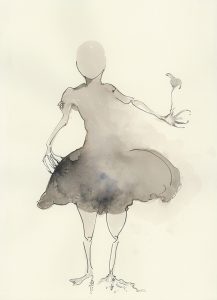
A bilateral programme launched in 2001 by Spain and Morocco brings thousands of Moroccans to the Andalusian province of Huelva for up to nine months a year to work primarily on the strawberry harvest. This programme was renewed with 16,000 Moroccans labourers for the harvest calendar 2022-2023 under the ironic name of circular migration programme[8]. To make sure the participants labourers go back home, women between 25 and 45 years of age with children waiting in Morocco are hired. The government scheme contractually ties the worker to an employer and requires officials’ authorisation to change jobs, which makes employment mobility almost impossible in case of abusive situations[9]. With unemployment in Andalusia around 18% in 2023, one wonders why nationals are not filling these jobs. Here are some of the reasons that the Ethical Consumer organisation[10] reported on the working conditions of Moroccans female labourers. It is worth noting in passing that the organisation is from the UK where 60% of strawberries imported during winter come from Huelva province. Working conditions were described and observed as frequently paid less than the minimum wage, working overtime without being paid, passports or wages withheld by the foreman to keep the labourers working under the threat. The same strategy is used to force women into sexual intercourses. Thousands live next to the strawberries polytunnels installation in shacks build out of material recycled from greenhouses, with no basic sanitation, running water or electricity. Spain’s labor ministry has carried inspections and distributed fines of € 1,6 million, but does it really bother agro-industrial companies that have earned € 310 million in 2022 from their UK sells.
Reflection
Let’s use a multidimensionality lens, to see how this complexity aspect allows more subtle layers of the current food production model to rise to the surface. First dimension: work conditions of female migrant agricultural labourers. Current data show that in the case of Moroccan migrant mothers in Spain, the possibility of returning each year to earn money (it is less likely for them to find work in Morocco and match the salary made in Spain) for their families was enough to convince them to comply with the labor-intensive work regime and the conditions of the labor contract. And most were using the money to build houses in Morocco[11]. Working in the strawberry fields is the least worst of the worst where the ‘least worst’ means to be considered cheap and infra-humanised foreign labor[12]. Second dimension: consumers choice. The UK Ethical Consumer organisation points the finger onto Spanish government lack of labor rights and laws reinforcement in the agro-industrial corporate sector of strawberry production, specifically in the province of Huelva in Andalusia. In 2019, the UK domestically produced a record of 124,500 tons of strawberries[13]. Strawberry is a spring-summer fruit. Eating locally and seasonally would mean consumers’ behaviour change by stopping eating strawberries all year round and thus covering national consumption needs with their domestic production. Third dimension: crop intensive monoculture. 6,095 hectares[14] in 2019 were used for strawberry crop in Huelva province. Strawberries roughly need 5 cm water irrigation daily during fruit bearing season. On the short-middle-long term, strawberry crop is unsustainably energy-intensive. Fourth dimension: semi-arid climate. 75% of the Spanish territory is in process of desertification, Andalusia region is in the driver seat. The war on water has started in Huelva province for strawberries irrigation by diverting, draining Doñana Natural Park water (130,000 hectares), one of Europes’ most important wetlands, towards strawberry fields. Currently the industry of sea water desalinisation, another unsustainable energy-intensive business, is also booming, although the brine byproduct is a groundwater contaminant and is highly polluted.
Here are the cards of the strawberry corporate agro-industry laying on the table in southern Europe Andalusia: migrant female agriculture labor working in modern slavery conditions, soil desertification by unsustainable energy-intensive year-round monoculture, drainage of Doñana Natural Park water adding up to existing pressures on biodiversity, about 90% of Huelva strawberries are for long-distance fossil energy dependent exportation, sea water desalinisation isn’t a sustainable solution. Is that the five-card hand 3,000 years of agriculture left us with?
Utopian Projection 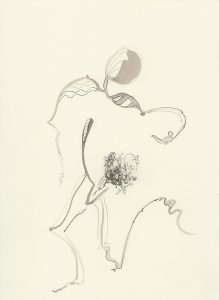
A potential does not preexist its emergence. If it doesn’t emerge, it’s because it wasn’t really there. If it does, it really only just arrived. The vagueness is the way in which potential presents itself in the unfolding of experience. The degree of vagueness corresponds to the margin of uncertainty in the situation. The vague is the newness, the ‘nextness’ of what will be again –but already, as it is under way. It is the difference in the process of repetition (Massumi, 2002)[15].
Becoming a Planetary Gardener
Trevor Goward, a self-taught lichenologist who lives in rural British Columbia, Canada came up with the concept of emergence after observing and studying the lichen. The lichen is the emergence, the outcome of the symbiosis between e.g., algae and fungus. It has characteristics not found in both original parts. The emergence is when something becomes more than the sum of its parts[16].

When I first read those lines, I immediately thought about relationship between humans. I had been looking for a concept to express how I felt about friendship, love and more recently about nonhumans and how without the emergence of something other, there is no relationship. We relate to create, to become something more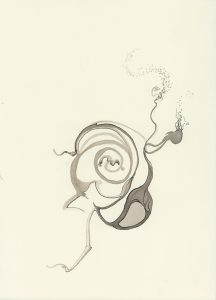 together. The becoming of the planetary gardener is tied with the emergence of her/his interactions with nonhumans and humans alike. Becoming is about action, about the occurrence of an event, an encounter. Becoming needs a historical context only to turn its back on it and start to create something new. The actual is not what we are, but what we are in the process of becoming, that is, the other (Deleuze and Guattari, 1991)[17]. Becoming woman, migrant, planetary gardener, plant, pollinator, compost, humus. Becoming is an inner and outer movement to the self and to the other.
together. The becoming of the planetary gardener is tied with the emergence of her/his interactions with nonhumans and humans alike. Becoming is about action, about the occurrence of an event, an encounter. Becoming needs a historical context only to turn its back on it and start to create something new. The actual is not what we are, but what we are in the process of becoming, that is, the other (Deleuze and Guattari, 1991)[17]. Becoming woman, migrant, planetary gardener, plant, pollinator, compost, humus. Becoming is an inner and outer movement to the self and to the other.
An example of both becoming and emergence between humans and nonhumans is beautifully exemplified in the words of Gilles Clément. Plants travel. Especially herbs. By reaping the clouds, one would be surprised to harvest imponderable seeds mixed with loess, fertile dust. In the sky, unpredictable landscapes are already taking shape. Everything is suitable for transport, from sea currents to the soles of 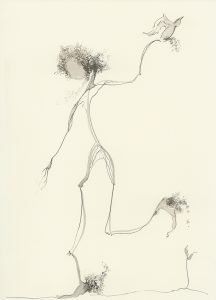 shoes. Most of the journey comes down to the animals. Nature charters berry-eating birds, garden ants, calm, subversive sheep, whose fleece contains fields and fields of seeds. And then the human being. Restless animal in incessant movements, free exchanger of diversity, passenger of the Earth, privileged matchmaker of unexpected marriages, direct and indirect actor of vagrancy, vagabond himself (Clément, 2002)[18].
shoes. Most of the journey comes down to the animals. Nature charters berry-eating birds, garden ants, calm, subversive sheep, whose fleece contains fields and fields of seeds. And then the human being. Restless animal in incessant movements, free exchanger of diversity, passenger of the Earth, privileged matchmaker of unexpected marriages, direct and indirect actor of vagrancy, vagabond himself (Clément, 2002)[18].
In that sense, we all are in-becoming planetary gardener with different degrees of self-awareness and accountability. Gardening by inavertedly moving seeds under one’s shoe sole isn’t enough anymore though. Each gardener has the responsibility to seek training to understand and know how to practically support their local ecosystem. The planetary gardener role is singular, minoritarian and universal. Minoritarian, in the Deleuzian sense of minority as a group, however many, that deviates from the majority model which is the constant, the state of law and domination.
The constant interpenetration between all living beings and its resulting metamorphosis is an idea that is slowly heading towards mainstream cultures.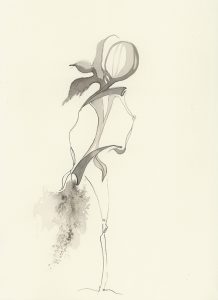 This worldview however has been part of First Nations cultures from all over the planet Earth for the longest times. Awareness of one’s role in a given ecosystem raise through our senses. One rule of Edgar Morin’s complexity concept is that the observer/designer must integrate themselves into their observation and into their conception. The observer/designer has to try to conceive their ‘here and now’ auto-eco-organisational. Sensibility through sight, touch, smell, taste, attention is the way in the here and now. It also needs empathy and affection to both human and nonhumans. Affect is in some ways the opposite of a concept. A concept gives order, or direction, to our thinking. Affect, by contrast, is the power to interrupt synthesis and order (Colebrook, 2002)[19], the power for the planetary gardener minoritarian emergence.
This worldview however has been part of First Nations cultures from all over the planet Earth for the longest times. Awareness of one’s role in a given ecosystem raise through our senses. One rule of Edgar Morin’s complexity concept is that the observer/designer must integrate themselves into their observation and into their conception. The observer/designer has to try to conceive their ‘here and now’ auto-eco-organisational. Sensibility through sight, touch, smell, taste, attention is the way in the here and now. It also needs empathy and affection to both human and nonhumans. Affect is in some ways the opposite of a concept. A concept gives order, or direction, to our thinking. Affect, by contrast, is the power to interrupt synthesis and order (Colebrook, 2002)[19], the power for the planetary gardener minoritarian emergence.
The Farm of the Possibles potentialities
I chose the Strawberry fields example to illustrate how the agro-industrial corporate majority is managing the current food production model and expose how it is a threat to people, the land, water supply and local food sovereignty. Most importantly, perhaps, because this example is next door to where my life project is. Locality is where singularity is observed. Local and singular are articulated to the Universal made of all the relationships between animal (including human) and vegetal species found in a parcel of the planetary ecosystem. To conclude, I will shortly expose how concepts such as emergence, becoming, minority, complexity have shaped my thinking and affect, my sensibility enabling me to envision actions in accordance with my moral compass, embracing human and nonhumans welfare.
In this utopian projection, the bilateral Spanish Moroccan governmental circular migration programme is a worldwide integral education one where apprentices of all ages and places of birth are welcomed to learn through permacultural (permanent agriculture, permanent culture) practices, techniques to create or support functional ecosystems.
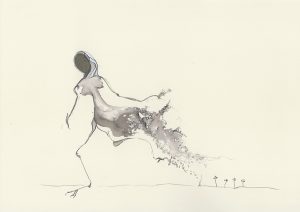
At the Farm of the Possibles, the words peasant and farmer are merged into the word gardener[20] and is considered the most important planetary role a human being can play.
The working conditions are dignified and diversified. When the training ends, the gardener is offered a selection of rural villages to choose from to establish her household. These villages are part of a rural resettlement-revitalisation programme where nationality is granted to anyone welling to actively participate in the creation, management, and governance of a local auto-eco-organisation; an autonomous ecosystem. Through the lens of Morin’s complexity, autonomy is defined as a close and open system. A working system needs renew energy coming from the environment, establishing an interdependence between the finitude of environment resources and the individual taking and giving back to it. At the meantime, the system is closed to preserve its individuality and originality.
In Morin’s words, one must be dependent to be autonomous. In Goward ones, a lichen responds to what’s going on around it, and its response is its agency. The same is true of the living world.
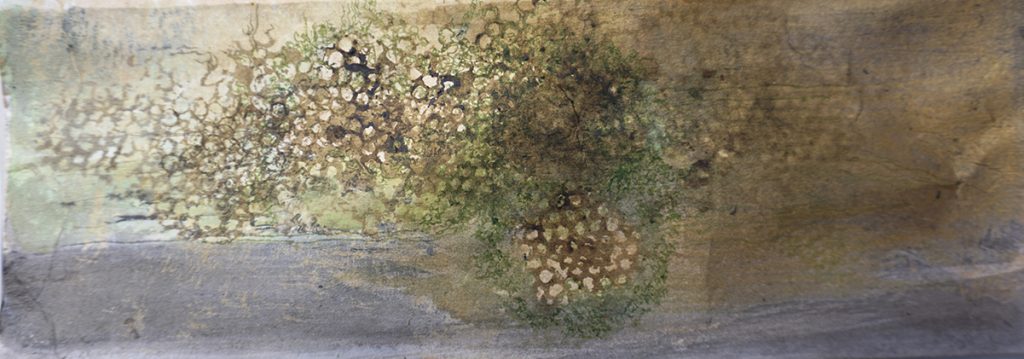
This environmental dependency means the constant revitalisation of the soil by creating and supporting functional ecosystem that thrives on diversity and producing the necessary organic matters for its renewal. For this to happen the agricultural model must become an edible forest ecosystem. In this ecosystem, the productivity is calculated by the number of individuals that can be fed, while maintaining the ecosystem functionality. With 300 hectares in diversified crops production, the Farm of the Possibles would feed 246,430 persons[21]. The size of the city of Granada without the metropolitan area. In terms of food transportation, the Farm is located at five kilometers from the city centre. Water wise, the plant diversity selection is based on a semi-arid climate and drought proofing permaculture techniques where five sources of water are part of the design – rain, well, pond, surface run off, roof collection, swales and earth works, for aquifer recharge, such as berms and hugelkulture (building a garden bed from rotten logs and plant debris), grey water management, black water treatment, local residue identification and processing, compost planning. The Farm is energy auto-sufficient (windmill, solar energy).
The Farm of the Possibles Integral education programme is defined as the learning from significant practical experiences from intellectual disciplines and practical knowledge to develop a community where the fabric of social human and nonhumans solidarities is reactivated. The values of integral education are equality, cooperation, autonomy, interdependence, sharing, frugality, and individual and collective empowerment. The Farm of the Possibles will serve as a place of transdisciplinary and collaborative learnings and transmit to the participants of all ages the potential of community auto-eco-organisation. The planetary gardener works in supporting the functionality of an open and close ecosystem where s//he brings in singularity and originality while contributing to the adequate management of the finiteness of our planetary resources.
In this utopia, the future inhabitants of the Reinvigorated Rural Spain are partly climate migrants for whom Andalusia and Spain would become a welcoming, educational, integrating destination where to settle.

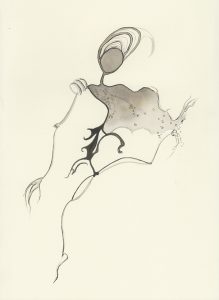
References
[2] Rustic land is not zoned for residential purposes but is instead zoned for agriculture, forestry, nature reserves, flood plains etc. It is otherwise known as Non Urbanizable Land or ‘Suelo No Urbanizable’.
[3] The notion of autopoiesis is at the core of a shift in perspective about biological phenomena: it expresses that the mechanisms of self-production are the key to understand both the diversity and the uniqueness of the living. Varela, Francisco J. 1981. Autonomy and Autopoiesis. In Roth G. & Schwegler H. (eds.) Self-Organizing Systems: An Interdisciplinary Approach. Campus Verlag: Frankfurt/New York. pp. 14–24.
[4] International Year of Family Farming (IYFF) 2014
[5] The reformed CAP aims to: 1) Provide more targeted support to smaller farms. 2) Enhance the contribution of agriculture to EU environmental and climate goals.
3) Allow greater flexibility for member states in adapting measures to local conditions.
[6] Leclair, L. 2022. February. La agroindustria se traga la tierra. De la granja familiar a la empresa internacional. Le Monde Diplomatique. pp.20-21.
[7] https://www.etymonline.com/word/humility
[8] Programa de migración circular del Ministerio de Inclusión
[9] This scheme is comparable to the one in place in the United States of America with central American agriculture workers.
[10] Ethical consumer since 1989
[11] In total, they conducted interviews with eight migrant women workers from Morocco. Mannon, Susan, Petrzelka, Peggy, Glass, Christy, Radel, Claudia. 2012. Keeping Them in Their Place: Migrant Women Workers in Spain’s Strawberry Industry. International Journal of Sociology of Agriculture and Food. 19. However, more research on agricultural labor circular migration such as Rye, Johan Fredrik, Andrzejewska, Joanna. 2010. The structural disempowerment of Eastern European migrant farm workers in Norwegian agriculture. Journal of Rural Studies. 26. pp. 41-51. Luque-Ribelles, Violeta, Palacios-Gálvez, María Soledad, Morales-Marente, Elena. 2018. How women migrants cope with their labour experience: The case of Eastern European women working on strawberry farms in Spain. Psychological Thought. 11:2. pp. 174–194. and personal communication with Prof. Virginia Paloma go in the same direction.
[12] More research need to be conducted in the country of origin (to lift the pressure of being interviewed on the farm) of women circular migrants over a long-term period to document what makes them enrolled, returned yearly, what is the salary difference, how is the money made invested, how women status, gender relation, motherhood change in the country of origin, what are the psychological and physical sequels, how does it affect the next generation (women’s children) and more action-research to participate in radically changing the current scenario.
[13] The European market potential for strawberries
[14] Total area of strawberry cultivation in Huelva: 6,095 hectares (15,052 acres)
[15] Massumi, Brian. 2002. Parables for the Virtual: Movement, Affect, Sensation. Durham-N.C.: Duke University Press.
[16] https://blogs.scientificamerican.com/observations/what-lichens-can-teach-us/
[17] Deleuze, Gilles & Guattari, Félix. 1991. What is Philosophy?. Columbia University Press.
[18] Clément, Gilles, 2022. Éloge des vagabondes. Herbes, arbres et fleurs à la conquête du monde. Paris : Éditions Robert Laffont.
[19] Colebrook, Claire. 2002. Gilles Deleuze. New York: Routledge.
[20] Farmer: A person engaged in agriculture, raising living organisms for food or raw materials. The term usually applies to people who do some combination of raising field crops, orchards, vineyards, poultry, or other livestock. A farmer might own the farmland or might work as a laborer on land owned by others.
Peasant: A member of a class of persons, as in Europe, Asia, and Latin America, who are small farmers or farm laborers of low social rank.
Grower: A person or company that grows plants, fruits, or vegetables to sell.
Gardener: A person who tends and cultivates a garden as a pastime or for a living.
[21] Roughly it is possible to produce 200 seasonal organic veggies and fruits baskets per hectare of land. An organic basket feeds two adults and two children. See on p. 30 Fortier, Jean-Martin. 2012. Le Jardinier-Maraîcher. Manuel d’agriculture biologique sur petite surface. Écosociété: Montréal.
© Essay Natasha Prévost
© Illustrations Mar Giménez
